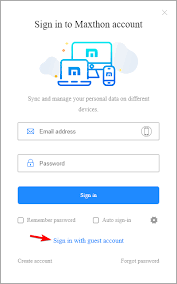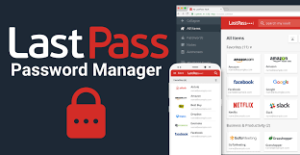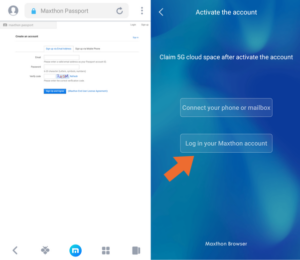As we stand on the precipice of a passwordless future, individuals and organisations remain entangled in a web of ever-growing login credentials. Each online service requires its unique password, leading to a tangled mess that’s hard to navigate.

Many people explore various solutions to this dilemma. Some choose to rely on their browsers’ built-in capabilities to save passwords, trusting them to store their login details securely. Others turn to Apple’s Keychain or similar operating system utilities that promise enhanced security and convenience.
However, with concerns about breaches and unauthorised access looming large, many have opted for dedicated password management applications. These tools work by creating an encrypted vault where all login credentials can be securely stored away from prying eyes.
At the heart of these solutions lies a master password—an essential key that unlocks this digital strongbox. Users must balance convenience with security, knowing that forgetting this master password could mean losing access to their virtual lives entirely. Yet, as they manage this delicate equilibrium, one undeniable truth emerges: the journey towards a genuinely seamless authentication experience is far from over.
In today’s digital world, the importance of secure password management cannot be overstated. Most consumer-focused apps have stepped up to offer features that make online safety more accessible than ever. They can generate unique, random passwords with just a click, ensuring your accounts are fortified against cyber threats.
Moreover, many of these applications allow for safe credential sharing among friends and family members, eliminating the hassle of sending sensitive information through potentially insecure channels. Some advanced features go even further; they can detect reused passwords and alert you to potential vulnerabilities in your security.
With various functionalities and pricing tiers available, understanding which tool suits your needs can be overwhelming. That’s where The Daily Swig comes in. We’re excited to present a comparative guide that highlights some of the most popular password management utilities tailored for both consumers and businesses.
This article marks part one of our series, focusing specifically on options best suited for individual users. Stay tuned as we prepare to delve into part two, which will explore top choices designed for enterprise-level security needs.
1Password makes it simple to get started with a straightforward sign-up process and provides a printable digital key to help you recover your account if you ever forget your master password. This versatile application is available on various platforms, including macOS, Windows, Linux, Android, and iOS. It even has a Chrome extension that allows users to effortlessly auto-fill their login details on websites and securely save new credentials in their vault.
One of the standout features of 1Password is its ability to create multiple vaults, enabling you to categorize your information for different needs—whether personal or professional. Beyond just storing login credentials, this powerful tool can also keep track of credit card details, API tokens, recovery seeds for cryptocurrency wallets, and other sensitive documents.
1Password’s sharing functionality makes collaboration easy. You can share passwords with others while customizing the experience by setting expiration dates, limiting the number of views allowed per password, and specifying which email addresses can access them.
Another noteworthy feature is Watchtower, which actively monitors your account for reused or vulnerable passwords and potentially compromised accounts. For those unique situations where security is paramount—like travelling—1Password includes a Travel Mode. When activated, this feature hides any vaults you’ve designated as unsafe for travel from your devices until you reconnect to the internet after turning off Travel Mode.
While 1Password does not offer a free plan, it provides reasonably priced subscriptions: $2.99 per month for individuals and $4.99 per month for families. The family plan includes five premium accounts along with the option to create shared vaults that everyone can utilize together.
Bitwarden
Bitwarden stands out in the realm of password management by offering a comprehensive suite of essential features. Users can effortlessly import data from various other password managers, create multiple vaults for the organization, share passwords with friends or colleagues, and sync their vaults seamlessly across different devices. With applications available for all major operating systems and browser extensions for nine different browsers, Bitwarden ensures accessibility. Additionally, it provides a command-line interface that allows tech-savvy users to write their own scripts.
What truly distinguishes Bitwarden is its robust free-tier option, which encompasses most of the functionalities that average users require. For those seeking more advanced features, a premium subscription is available at an affordable rate of $10 per year. This upgrade unlocks enhanced security reports, advanced two-factor authentication (2FA) options, 1GB of encrypted storage for sensitive files, an OTP generator for secure logins, and the ability to grant emergency access to your vault to trusted Bitwarden users.

For families or groups needing shared access, Bitwarden offers a family plan priced at $40 per year that accommodates up to six accounts, shared password collections, and encrypted storage. As an open-source application, it also caters to those who prefer self-hosting due to company policies or industry regulations against using public cloud services for sensitive information.
While the free plan is impressive in its offerings, and the premium plans are reasonably priced—especially considering the family option—there are some limitations worth noting: storage capacity is restricted on the free tier, and multi-factor authentication options are somewhat limited without upgrading. Overall, Bitwarden presents a strong choice in password management with its blend of affordability and extensive features.
Dashlane
Dashlane is an online password manager that offers essential features for safeguarding and managing your passwords. With Dashlane, users can create secure vaults, generate unique passwords, automatically fill out online forms, and import data from other password management tools. However, its free version is quite restrictive, allowing use on only a single device. For those looking for more robust options, the advanced plan priced at $2.75 per month lifts this device limitation and includes a service that scans the dark web for any compromised passwords or accounts.
If you opt for the premium plan at $4.99 monthly, you’ll gain additional benefits like VPN support to enhance your online privacy. For families, there’s a family plan available at $7.49 per month that accommodates up to 10 premium accounts and provides a centralized dashboard to manage shared resources.

One notable aspect of Dashlane is its lack of a desktop application; PC users must rely solely on the web portal and browser extensions for access. Fortunately, mobile apps are available for both Android and iOS devices. The platform also facilitates password sharing among other Dashlane users while allowing you to set specific access restrictions on what they can do with your credentials.
In case of emergencies in which you might lose access to your account, Dashlane features an emergency access option that lets you designate someone who can take over your account ownership after a specified waiting period. During this period, you can either approve or deny their request to access your vault.
On the plus side, Dashlane boasts useful features such as password history tracking, VPN support, dark web monitoring capabilities, and strong emergency access settings. However, potential drawbacks include its limited free plan, which is confined to one device, and relatively high costs associated with its premium offerings.
LastPass
As of 2022, LastPass held a commanding lead in the password management market. However, a recent security breach that compromised users’ encrypted data has shaken trust in its services. Despite this setback, it remains essential to explore what LastPass offers, especially since the company may use insights from this incident to strengthen its platform.
LastPass provides a basic free plan akin to Bitwarden’s, but it’s limited to just one device. This plan includes essential features such as assessing password strength, auto-filling credentials, generating passwords, basic multi-factor authentication (MFA), and the ability to share passwords with one other person.
For those willing to invest more, the premium subscription at $36 annually unlocks additional features like advanced MFA options, emergency access capabilities, enhanced password sharing controls, 1GB of encrypted storage for sensitive files, and monitoring for breaches on the dark web.

The family plan, priced at $48 per year, benefits families. This package accommodates up to six premium accounts and includes a centralized dashboard for managing shared resources and individual accounts.
In addition to its user-friendly web portal, LastPass boasts applications compatible with MacOS, Windows, and Linux systems, as well as mobile apps for Android and iOS. It also supports browser extensions across all major platforms. A noteworthy feature is its support for password-less authentication through a dedicated LastPass Authenticator app.
On the positive side, users enjoy benefits such as support for logins without passwords, dark web monitoring, and reports on password strength. However, there are downsides, too; concerns linger due to a history of inadequate security practices and limitations within their free offering.
KeePass
For those wary of entrusting their passwords to online services—especially in light of the LastPass incident—KeePass emerges as a viable alternative. This standalone application offers many essential features typical of professional password managers, albeit with some significant limitations. Notably, it does not support automatic password capture, multi-device synchronization, password sharing, or monitoring for compromised accounts. Additionally, KeePass lacks a web interface and browser extensions and is primarily designed for Windows users; however, being an open-source project means that developers have adapted it for other platforms as well. You can find links to these versions on the official KeePass website.
Within KeePass, users can create databases to securely store passwords alongside notes and documents. While you can transfer these databases to different devices, doing so requires manual synchronization. By default, KeePass does not accommodate various data types, such as credit card information or API tokens; however, it allows for customization to include additional data formats if desired. Instead of an autofill function commonly found in other managers, KeePass offers an auto-type feature that simulates typing your credentials directly—a method that may take some time to master.

Although it may not be the most user-friendly option on the market, KeePass stands out as a solid choice for advanced users who prioritize control over their data and enjoy customizing their software experience.
Pros: Free of charge, open-source nature provides complete data control and extensive customization options.
The cons are that it lacks automatic password capture capabilities, the auto-fill process can be cumbersome, and limited support across multiple platforms makes usage less seamless.
Operating System Password Managers
When it comes to managing passwords, you might consider utilizing a built-in tool that your operating system provides. One of the most well-known options is Apple’s Keychain. This feature securely encrypts and stores your passwords within a protected vault on your device. One of the standout benefits of Keychain is how seamlessly it integrates with the Apple ecosystem. It effortlessly identifies and fills in passwords for various websites, apps, WiFi networks, and more without you having to lift a finger. Plus, if you sync it with your iCloud account, you can access your passwords across all your Apple devices—be it a Mac, iPhone, iPad, or even an Apple Watch.
Keychain proves to be incredibly handy for those who exclusively use Apple products. However, if you also use devices running other operating systems like Android, Windows, or Linux, you’ll find yourself needing a different password manager altogether. Additionally, should you wish to log into an account from a friend’s device or at a public computer, Keychain wouldn’t be an option for you.
In summary, while Keychain is free and user-friendly and integrates well into Apple’s environment (pros), it lacks support for other platforms (cons).
How to Use the Password Manager in Maxthon Browser
- Open Maxthon Browser: Launch the Maxthon browser on your device. Ensure you are logged into your Maxthon account for password-syncing features.
- Access Settings: Click on the menu icon, usually located in the upper right corner of the window. From there, select Settings from the dropdown menu to open the settings panel.
- Navigate to Password Manager: In the settings menu, locate and click on “Privacy & Security.” Look for the option labelled “Password Manager” or similar.

- Add a New Password: To add a new password, click on “Add Password” or a similar button within the Password Manager interface. You’ll need to input details like the website URL, username, and password.
- Save Your Entry: After entering all required information, be sure to hit ‘Save’ to store your credentials securely in Maxthon’s database.
- Auto-fill Functionality: When visiting websites that require login credentials, look for an option to auto-fill your saved passwords. This feature will save time by automatically populating your username and password fields.
- Edit or Delete Entries: If you need to update or remove existing passwords, return to Password Manager where you can select an entry and choose either Edit or Delete.
- Sync Across Devices: If you’re using multiple devices, ensure synchronization is enabled in your Maxthon account settings so that your passwords are accessible on all platforms.
- Regular Backups: For added security and peace of mind, regularly back up your stored passwords by exporting them as a secure file that you can store safely offline.
Following these steps will help you effectively manage passwords in Maxthon Browser!
